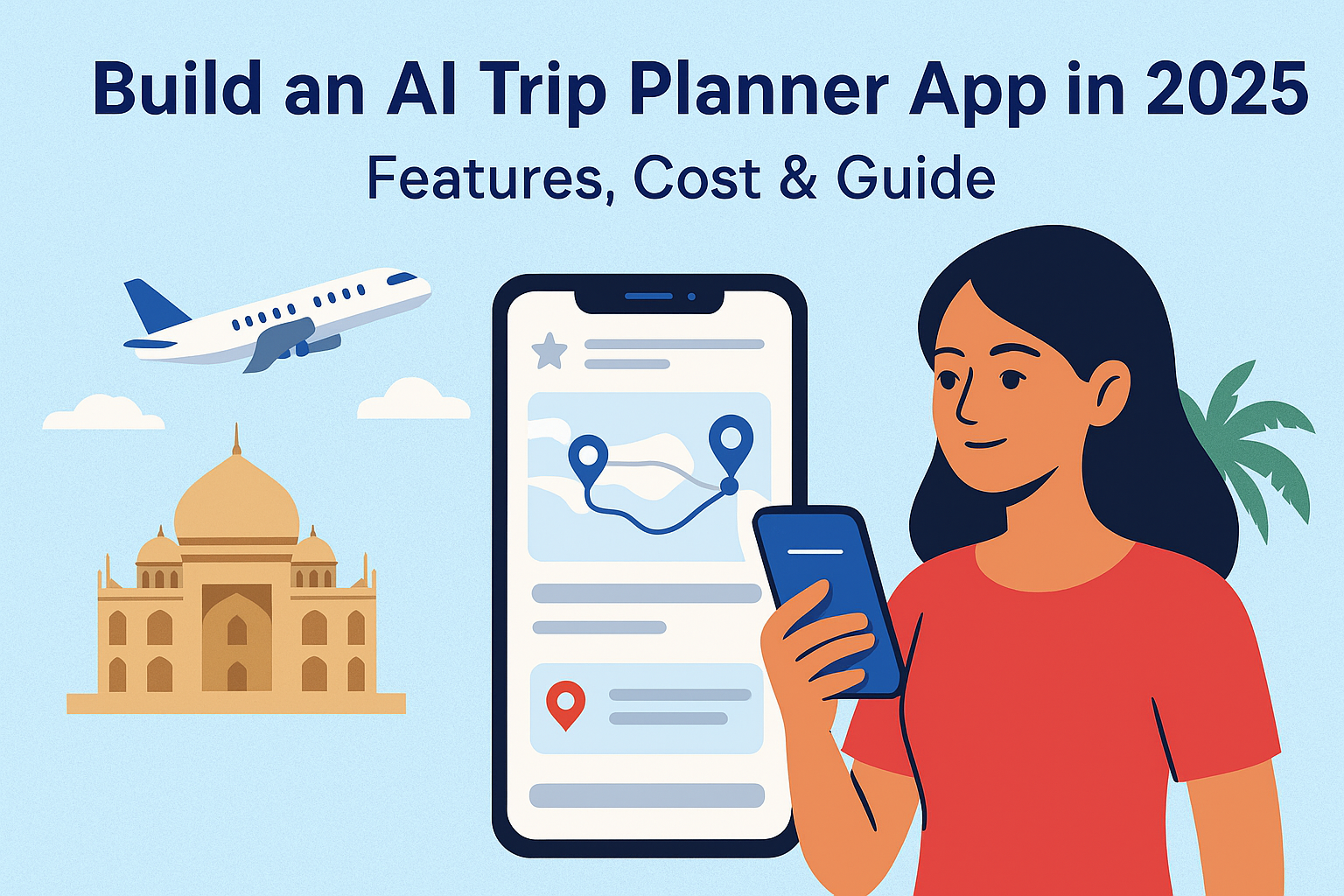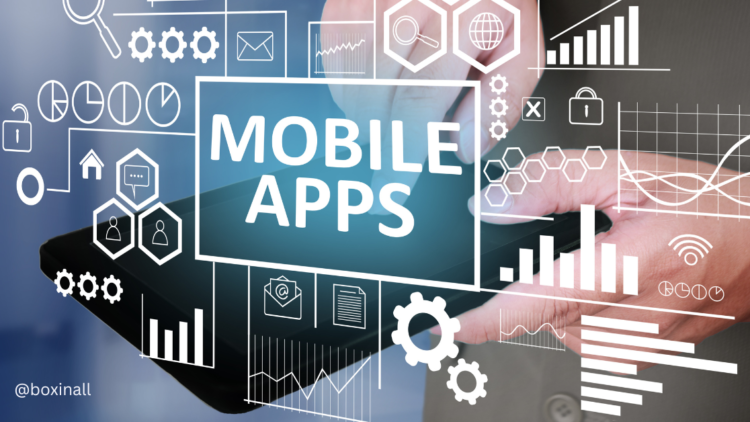“Your next adventure shouldn’t start with chaos – let AI plan your path.”
In 2025, more travellers expect intelligent, personalized, data-driven trip planning—not just booking tools. If you’re wondering how to build an AI trip planner app, you’re in the right place. In this guide, we’ll explore features, cost estimates, and a detailed roadmap to build an AI trip planner app that delights users and generates revenue.
Table of Contents
- What is an AI Trip Planner App & Why It Matters
- Market Trends & Opportunities
- Core & Advanced Features to Include
- Step-by-Step Guide: How to Build an AI Trip Planner App
- Cost Breakdown: What to Budget For
- Monetization Strategies
- Challenges & How to Overcome Them
- FAQ: Common Questions About AI Trip Planner App Development
- Conclusion & Call to Action
What is an AI Trip Planner App & Why It Matters
An AI trip planner app is more than an itinerary generator. It’s a smart travel assistant that:
- Learns user preferences (budget, interests, pace).
- Ingests real-time data (flight delays, weather, local events).
- Suggests optimized itineraries, alternative routes, experiences off the beaten path.
- Interacts via natural language (chat, voice) and provides proactive suggestions.
Why Build One in 2025?
- Travel is rebounding post-pandemic; travellers demand better tools.
- Smartphone usage, faster mobile internet, and AI (ML, NLP) are mature enough to deliver a smooth experience.
- There is still a gap: many apps offer booking, many offer reviews, but few deliver highly personalized, dynamic planning.
- Businesses that get this right can capture loyal users, affiliate or commission revenues, and differentiate themselves.
Market Trends & Opportunities
- AI integration in travel apps is a top trend for 2025. (JPLoft)
- Predictive analytics (forecasting flight/hotel pricing, occupancy, event trends) offers a huge value proposition.
- AR and VR features are becoming differentiators—for example, AR navigation, virtual tours. (JPLoft)
- Multilingual and voice-based features help target global users.
Real case: Apps that include real-time recommendations (flight changes, weather, events) retain users much better than static itinerary apps. According to sources, apps with dynamic features have higher engagement and lower churn.
Core & Advanced Features to Include
When planning features, divide them into must-have vs delighters.
| Type | Features | Why They Matter |
|---|---|---|
| Core / Must-Have | • User profile & preferences (travel style, budget, duration) • Itinerary creation (flights, hotels, attractions) • Search & filtering (by cost, time, distance) • Booking integrations (flights, hotels, rental cars) • Real-time updates (weather, delays, alerts) • Maps & navigation, offline access • Reviews / ratings / social integration | These are expected; without them, user may drop off. |
| Advanced / Delighters | • NLP / Chatbot / voice input (“Plan me a 5-day trip to Thailand under $2000”) • Predictive suggestions (price drops, best time, crowd forecasts) • AR-powered navigation & virtual previews • Expense tracking & budgeting tools • Multi-language & localization support • Machine learning-based personalization (based on past trips, feedback) • Offline map + scheduling support | These differentiate the app and help increase retention and “wow” factor. |
Step-by-Step Guide: How to Build an AI Trip Planner App
Here’s a structured roadmap you can follow to build your app successfully.
- Define Vision and Audience
- Identify target personas: solo travellers, families, digital nomads, luxury vs budget travellers.
- Understand pain points: what frustrates travellers in existing apps? (rigidity, lack of awareness of local experiences, hidden costs).
- Define your unique value proposition (what makes your AI trip planner different).
- Feature & Architecture Planning
- List features (core + advanced). Prioritize via MVP (minimum viable product) vs future enhancements.
- Decide app architecture: frontend/backend separation, microservices (if needed), offline-capability support.
- Plan data sources & integrations: flight APIs, hotel-booking APIs, maps, weather, event data, translations.
- Tech Stack & Tools
- Frontend: React Native, Flutter, or native (iOS/Android) depending on budget & expertise.
- Backend: Node.js, Django, or Ruby on Rails. Choose scalable, maintainable framework.
- Databases: PostgreSQL, MongoDB, or a mix for structured & unstructured data.
- AI/ML: Use existing NLP libraries (like HuggingFace Transformers), recommendation engines, perhaps services like OpenAI, or self-trained models.
- Cloud & hosting: AWS, Google Cloud, Azure. Use serverless or containerization (Docker / Kubernetes) if scale demands.
- Design & UX
- Create wireframes & prototypes. Focus on simple UX, minimal friction.
- Emphasize onboarding: capture preferences, travel style, budget, etc.
- Design for offline / spotty connectivity.
- Development
- Build MVP first: core features. Release to small user base.
- Agile / iterative sprints—incorporate user feedback.
- Ensure code is modular so advanced features (AR, advanced AI) can plug in later.
- Testing & QA
- Functional testing for features.
- Performance testing (app load time; handling many users).
- Security & data privacy testing (because you’ll handle personal data, possibly payment info).
- Usability & UX testing: user feedback, A/B testing.
- Launch & Post-Launch
- Soft launch or beta to iron out issues.
- Marketing plan: content, travel influencers, SEO, partnerships.
- Monitor metrics: retention, engagement, booking conversions.
- Continuous AI model refinement: collect feedback, usage data, tune recommendation engines.
- Regular updates, bug fixes, feature expansions.
Cost Breakdown: What to Budget For (in 2025)
Costs depend heavily on region, feature richness, quality, team composition, and scale. Below is an estimated breakdown with rough numbers (USD), which you should adjust to your geography (India / Southeast Asia / Europe etc.).
| Cost Element | Estimated Range* | What Drives the Cost |
|---|---|---|
| MVP / Basic version | $10,000 – $20,000 | Basic itinerary + booking + user profile + minimal AI / real-time data. |
| Feature upgrades (AI / AR / advanced personalization) | $5,000 – $10,000+ | More ML/NLP, AR navigation, predictive features. |
| UI/UX & Design | $2,000 – $5,000 | Quality of design, animations, adaptability across devices. |
| Backend & Infrastructure | $5,000 – $10,000 | Scalability, cloud services, API integrations. |
| Team / Development (developers, AI experts, testers) | $5,000 – $10,000+ | Number of people, hourly rates, location. |
| Third-party API / Data Cost | $2,000 – $15,000+ | Licensing, booking fees, mapping, weather, translation, etc. |
| Post-Launch / Maintenance | $5,000 – $10,000 annually | Updates, bug fixes, server costs, ongoing model training. |
*These are ballpark figures; if you develop in India / Southeast Asia, labour cost may be lower, but API/licensing may still be global.
Monetization Strategies
To make your AI trip planner app sustainable, consider one or a combination of these monetization models:
- Freemium model: Basic features free; premium features (e.g. enhanced AI, offline maps, concierge services) for paid users.
- Subscription plans: Monthly or annual fees for power users or frequent travellers.
- Affiliate / commission model: Earn when users book hotels, flights, car rentals via your app.
- In-app advertising: Carefully placed ads—e.g., local experiences or travel brands—without degrading UX.
- Tiered AI services: Offer advanced personalization, predictive analytics, or special features (AR navigation, virtual guides) as premium add-ons.
- Data insights: With user consent and privacy compliance, anonymized travel trends or demand forecasting can be valuable to tour operators or tourism boards.
Challenges & How to Overcome Them
| Challenge | Possible Problems | Mitigation Strategies |
|---|---|---|
| Data availability / accuracy | Flight price changes, hotel availability, event info may lag or be incorrect | Partner with reliable APIs; cache results; have fallback options; allow user feedback/corrections. |
| Integration of many third-party APIs | Differences in data formats, downtime, variable pricing | Use API gateway; standardize / normalize data; monitor health; have alternate providers. |
| High development and maintenance cost | AI/ML needs expertise; regular model updates; infrastructure scaling | Start with MVP; cloud scalable solutions; open source where feasible; incremental development. |
| UX complexity | Too many features may overwhelm users | Keep onboarding lean; prioritize features; progressive disclosure; continuous user testing. |
| Data privacy, security, compliance | Handling personal travel data, payment info, location, identity info | Use encryption, follow GDPR / local regulations; transparent privacy policy; anonymize data; secure storage. |
| AI model bias & performance | Poor recommendations; user dissatisfaction | Use diverse datasets; continuous evaluation; feedback loop; include human oversight. |
FAQ: Common Questions About AI Trip Planner App Development
Here are 5 (or 6) long-tail keyword–optimized FAQs people often ask when researching how to build an AI trip planner app.
- How much does it cost to build an AI trip planner app with predictive analytics in 2025?
The cost depends on region, feature set, and team. For an app with predictive analytics (price forecasts, ML recommendations), expect an added investment of roughly $20,000–$50,000 on top of basic features. Hosting, data licensing, and model training also contribute significantly. - What are the essential features for a travel planning app with AI in 2025?
Key features include itinerary generation, real-time updates (weather, delays), booking integrations, user preference profiling, filters & search, offline support. Delighter features include NLP or chatbot, AR navigation, predictive suggestions. - Which tech stack is best for building an AI trip planner app?
Many successful apps use React Native or Flutter for cross-platform frontend; Node.js, Django or similar for backend; cloud services (AWS, Google Cloud, Azure); ML/NLP frameworks (TensorFlow, PyTorch, HuggingFace). The choice depends on your in-house skills and scalability needs. - How long does it take to develop an AI trip planner app MVP?
For a core minimum viable product (basic features: itinerary + booking + preferences), it could take 3-6 months with a dedicated small team (developers, designer, QA). More advanced features, AI/ML, AR will extend the timeline. - What are the best monetization strategies for an AI-powered travel app?
Subscriptions, affiliate/commission-based bookings, premium AI/AR features, and data insights are among the most effective. The ideal mix depends on your target market (budget vs premium travellers) and feature set. - How to ensure data privacy and compliance in a travel planning app using AI?
Use secure user authentication; encrypt sensitive data; adhere to local/international laws (GDPR, CCPA, etc.); anonymize or pseudonymize travel data; provide clear privacy policy and user consent; regularly audit your systems.
Conclusion & Call to Action
Building an AI trip planner app in 2025 is an exciting opportunity. By carefully selecting your features, choosing the right tech stack, budgeting wisely, and staying user-centric, you can create a travel app that stands out in a crowded market.
Key takeaways:
- Start small with an MVP focusing on core functions; add AI/AR and personalization features over time.
- Prioritize user experience, reliable data integration, and privacy.
- Plan your monetization model early and align it with what users value.
- Be prepared for ongoing maintenance, AI model training, and updates.
If you’re ready to bring your vision to life, comment below with your ideas, share this post with fellow developers or entrepreneurs, or contact us to explore how we can help you build your AI trip planner app. Let’s build the future of travel—together!



